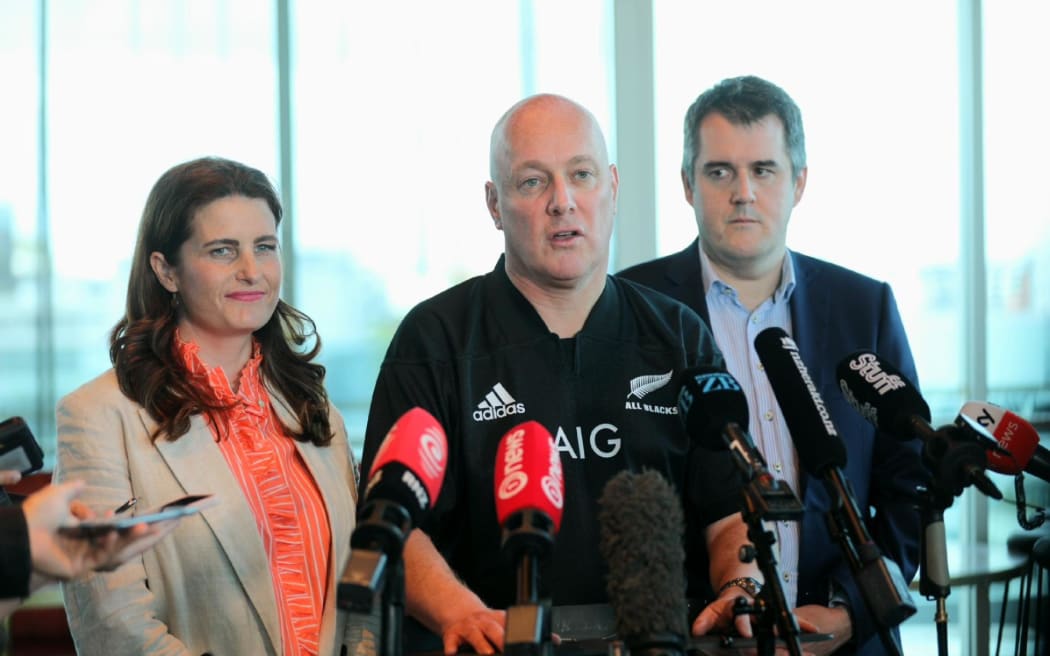
National Party deputy Nicola Willis, incoming prime minister Christopher Luxon, and campaign chair Chris Bishop speaking to media on 15 October, 2023. Photo: RNZ / Nick Monro
Analysis - By very early on election night, we knew who wouldn't be our government. Labour's loss of nearly half the support it received in 2020 will catapault it, and its allies in the Green Party, to the opposition benches.
However, we still don't really know who our new government is going to be. It is odds on that Christopher Luxon and his resurgent National Party will lead it. Who will join him in doing so, and in what capacity they will do so, still remains undecided.
Read more of RNZ's full election coverage:
- Post-election negotiations explained
- Christopher Luxon gets the job as PM - and deal-making headache
- Live election 2023 updates on 15 October: All the results, all the reaction
On the election night figures, National and ACT's 61 seats are (just) enough to form a government on their own. This is the case even though Te Pāti Māori's success in the Māori seats has, for the moment, created an "overhang" situation where parliament increases in size to 121 seats.
That seems highly unlikely to remain the case by the end of the election process. For one thing, the Port Waikato by-election on 25 November necessitated by the death of the ACT party candidate in that seat will add another seat to National. So, we can say that for all practical purposes National and ACT presently have 62 seats between them in a 122-seat Parliament.
However, the results announced so far only contain 'ordinary' votes. That is, the votes of people whose names were on the printed electoral roll and who then voted in the electorate in which they are enrolled.
Still to be counted are 'special' votes, which in previous elections have amounted to some 17 percent of the total. These are the votes cast by everyone else. They include people who voted from outside their electorate, and also people who only enrolled in their electorate after the printed roll was compiled.
Such voters usually skew heavily towards supporting parties on the left, because of their demographic characteristics. As a consequence, at both of the past two elections the addition of special vote tallies to the overall vote total has seen National lose two seats, with Labour, the Greens and Te Pāti Māori variously benefiting.
If 2023 produces a similar change, then National and ACT will only have 60 seats between them (after the Port Waikato by-election). That's not enough to govern alone in a Parliament of 120 seats, let alone 122.
Even if the special votes this election only shift one seat from the 'right' to the 'left' bloc, it will leave National and ACT with 61 seats. That's enough to govern in a Parliament of 121 seats, but not in a Parliament of 122.
Which brings us back to Te Pāti Māori and the overhang created by their success in the Māori electorates. At the moment, they lead in four of those seats and narrowly trail in two others.
It seems likely that they will win the four seats that they currently lead in. So, the odds are that the next parliament will have at least 122 MPs in it.
However, should the count of special votes deliver them all six of these electorates, then parliament could blow out to 124 seats in size. Which would increase the number of MPs required for a majority to 63.
As a consequence, we can say we know one thing from this election. While Labour, under Chris Hipkins, temporarily remain in office as a caretaker government, their time in power is very much over.
Beyond this, the shape of any replacement government remains to be decided. In particular, how will National and ACT find the extra parliamentary votes they almost certainly are going to need to govern?
There really only seems one option for them to do so. New Zealand First has eight seats it can offer up. But at what price, and on what terms?
*Andrew Geddis is a professor of law at the University of Otago.







